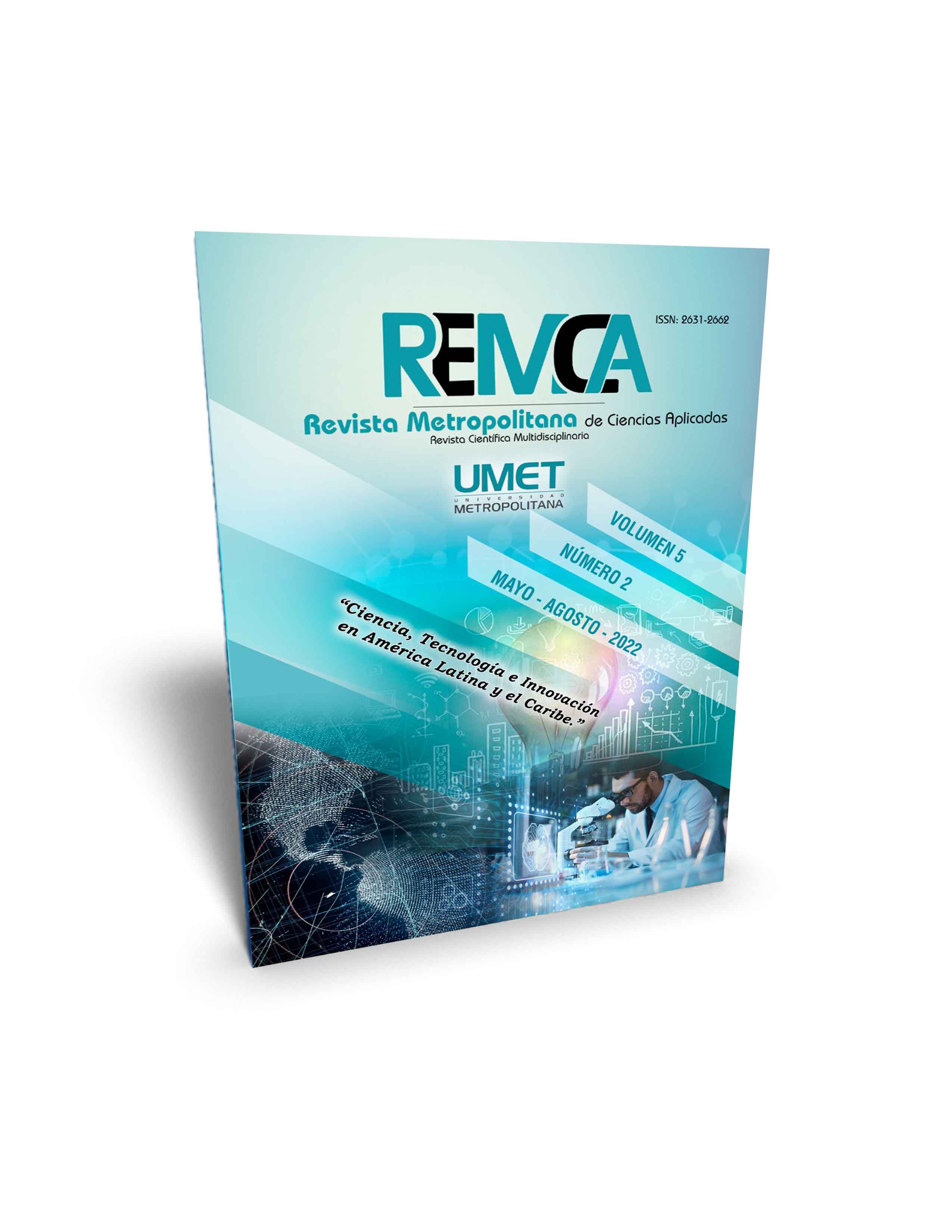Diversified production of food in patio and plot for family self-consumption
DOI:
https://doi.org/10.62452/yqxdh408Keywords:
Biodiversity, nutrition, fruits, ecological, healthyAbstract
Food security is when all people at all times have physical, social and economic access to sufficient, safe and nutritious food that meets their daily energy needs and food preferences to lead a healthy and active life. Family farming constitutes one of the first links in healthy eating, since it eliminates the use of agrochemicals that are harmful to health. The present study aimed to evaluate the diversified production of food in the yard and plot for family self-consumption with healthy and sustainable practices. It was developed in a family patio in the Palmira municipality in the period from March 2020 - June 2021, for which the biodiversity of plants in the patio and animal species present to diversify was diagnosed. An investigation of the no experimental type was carried out, using methods of the theoretical and empirical level. As a result, there was an increase in productions, an increase in biodiversity, economic, social and environmental improvement with the application of agricultural and sustainable practices in the family yard, which facilitated the availability of healthy and nutritious food.
Downloads
References
Asociación Cubana de Técnicos Agrícolas y Forestales. (2017). Nombres científicos y comunes de cultivos. ACTAF.
Blanco, D., Suárez, J., Funes-Monzote, F. R., Boillat, S., Martín, G. J., & Fonte, L. (2014). Procedimiento integral para contribuir a la transición de fincas agropecuarias a agroenergéticas sostenibles en Cuba. Pastos y Forrajes, 37(3), 284-290.
Concepción, I (2012). Indicadores de biodiversidad vegetal de unidades de producción agrícola de la provincia de Cienfuegos. (Tesis de Grado). Universidad de Cienfuegos Carlos Rafael Rodríguez.
Díaz, F., & Castrejón, V. (2012). El papel de los semioquímicos en el manejo de las moscas de la fruta Diptera: Tephritidae. El Colegio de la Frontera Sur.
Figueredo, M. (2021) Evaluación de atrayentes alimenticios en trampas rústicas en la captura de moscas de la fruta en el municipio de Cumanayagua. (Tesis deEspecialidad). Universidad Cienfuegos.
Funes, F. (2016). Actualidad de la agroecología en Cuba. Avances de laAgroecología en Cuba. EEPF Indio Hatuey.
Gil, J. L., & Quiñonez, S. (2011). Sustratos Alimenticios utilizados en el monitoreo de Anastrepha spp. en Naranjo (Citrus sinensis L. Osbeck) cv. Valencia en Tingo María. Investigación y Amazonía, 1(2), 108-114.
Gómez, F., Ríos, L., & Eschenhagen, L. (2017). Propuesta de unos principiosgenerales para la ciencia de la agroecología: una reflexión. Revista Lasallista deInvestigación, 14(2), 212-219.
Manzanal, M., Arzeno, M., Villareal, F., González, F., & Ponce, M. (2015).Agricultura familiar y soberanía alimentaria: diversidades territoriales de laspolíticas públicas en Misiones y Buenos Aires. Eutopía Revista de Desarrollo Económico Territorial, 6, 11-24.
Milián, I., Sánchez, I., Wencomo, B., Ramírez, W., & Navarro, M. (2018). Estudio de los componentes de la biodiversidad en la finca agroecológica La Paulinadel municipio de Perico, Cuba Pastos y Forrajes, 14(1).
Organización de las Naciones Unidas- Comisión Económica para América Latina y el Caribe. (2013). Perspectivas de la agricultura y del desarrollo rural en las Américas. Resumen Ejecutivo. CEPAL, FAO, IICAIICA. http://repiica.iica.int/docs/b3165e/b3165e.pdf
Organización de las Naciones Unidas para la Alimentación y la Agricultura. (2013). The state of food insecurity in the world: the multiple dimensions. FAO.https://reliefweb.int/report/world/state-food-insecurity-world-2013-multiple-dimensions-foodsecurity
Organización de las Naciones Unidas para la Alimentación y la Agricultura. (2018). Mensajes principales En Agricultura sostenible y biodiversidad: un vínculo indisociable. FAO.http://www.fao.org/3/a-i6602s.pdf
Parrada, Y., & Jeffers, D. (2020). Técnicas agroecológicas para la producción comunitaria de hortalizas, desde una perspectiva responsable. Revista Monteverdia, 13(2).
Salmón, Y., Funes, R., & Martín, O. (2012). Evaluación de los componentes dela biodiversidad en la finca agroecológica «Las Palmitas» del municipio Las Tunas. Pastos y Forrajes, 35(3), 321-332.
Schiavoni, G. (2001). Economía del don y obligaciones familiares: los ocupantesagrícolas de misiones y el debate Farmer-Campesino. Desarrollo Económico, 41(163).
Schneider, S. (2012). La construcción del concepto de agricultura familiar en América Latina. (Ponencia). II Taller de Expertos sobre Agricultura Familiar. San Salvador, El Salvador.
Vargas, B., Candó, L., Pupo, Y., Ramírez, M., Escobar, Y., Rizo, M., & Vuelta, D .(2016). Diversidad de especies vegetales en fincas de la agricultura suburbana enSantiago de Cuba. Agrisost, 22(2), 1-23.
Vázquez, L. (2010). Manejo de plagas en la agricultura ecológica. Boletínfitosanitario, 15(1).
Vergara, R. (2017). La importancia en el funcionamiento de los agroecosistemas: caso floricultura. Metroflor. http://www.metroflorcolombia.com/la-importancia-de-la-biodiversidad-en-el-funcionamiento-de-los -agroecosistemas-caso-floricultura/
Downloads
Published
Issue
Section
License
Copyright (c) 2022 Caridad Terry Espinosa, Maritza Hernández Castellanos, Minerva Almoguea Fernández, Reina Evelyn Hernández Calzadilla (Autor/a)

This work is licensed under a Creative Commons Attribution-NonCommercial-ShareAlike 4.0 International License.
Authors who publish in Revista Metropolitana de Ciencias Aplicadas (REMCA), agree to the following terms:
1. Copyright
Authors retain unrestricted copyright to their work. Authors grant the journal the right of first publication. To this end, they assign the journal non-exclusive exploitation rights (reproduction, distribution, public communication, and transformation). Authors may enter into additional agreements for the non-exclusive distribution of the version of the work published in the journal, provided that acknowledgment of its initial publication in this journal is given.
© The authors.
2. License
The articles are published in the journal under the Creative Commons Attribution-NonCommercial-ShareAlike 4.0 International License (CC BY-NC-SA 4.0). The terms can be found at: https://creativecommons.org/licenses/by-nc-sa/4.0/deed.en
This license allows:
- Sharing: Copying and redistributing the material in any medium or format.
- Adapting: Remixing, transforming, and building upon the material.
Under the following terms:
- Attribution: You must give appropriate credit, provide a link to the license, and indicate if any changes were made. You may do this in any reasonable manner, but not in any way that suggests the licensor endorses or sponsors your use.
- NonCommercial: You may not use the material for commercial purposes.
- ShareAlike: If you remix, transform, or build upon the material, you must distribute your creation under the same license as the original work.
There are no additional restrictions. You may not apply legal terms or technological measures that legally restrict others from doing anything the license permits.




